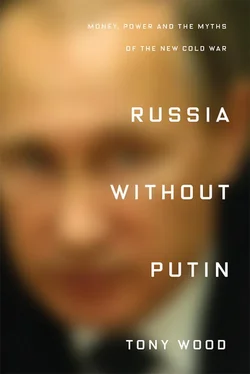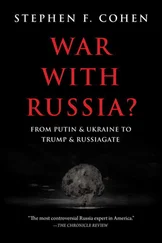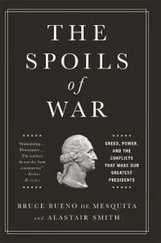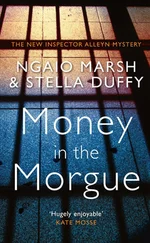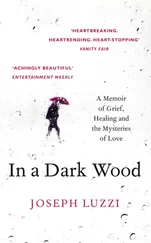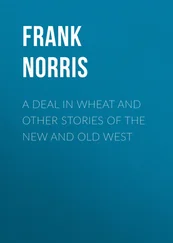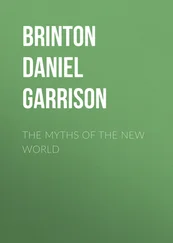How useful is this line of thinking for understanding the contemporary situation? I believe the past does matter – but not in the way most people seem to think it does. Since the 1990s, the conventional wisdom has been that Russia’s transition to capitalism has been slowed or distorted by the dead weight of the past, and that only when the country finally shakes off the remaining vestiges of the Soviet period will it finally be able to join the ranks of ‘normal’ liberal democratic countries. These arguments need to be turned on their head. Rather than being a hindrance, the remnants of the Soviet past have been a massive boon for post-Soviet Russia. We can see this most clearly if we look at Russian society at large, which has undergone a complex set of mutations often neglected in the general run of Western analyses, focused single-mindedly as they are on Putin.
After the collapse of the USSR, the transition to capitalism set in motion a process of sharp social differentiation that gave rise to new social groups and new experiences; yet it did not instantly demolish the previous social order, which persisted in various forms. The coexistence of these two social structures, one under construction within the still crumbling ruins of the other, gave rise to a parallelism of old and new – a kind of combined and uneven social development – which effectively smoothed the path of capitalist transition rather than blocking it.
This parallelism of old and new social structures helps explain some of the enigmas of post-Soviet society that have most puzzled outsiders. Why, given the extreme deprivation most Russians were experiencing, wasn’t there more upheaval during the 1990s? Why did it take so long for opposition to Putin to emerge in the 2000s? Why did so many Russians, during the petro-fuelled boom of that decade, rush to identify as members of a rising middle class, when by most indicators they would be classed as something else?
The usual answers to these questions cite many elements – including, most obviously, the disorientation sown by the 1990s transition and the real improvement in living conditions that many Russians experienced in the 2000s. But most accounts leave out an important part of the picture: the coexistence of old and new social structures provided a stabilizing subsidy to the Yeltsin regime, which Putin then inherited. The tenuous survival of pieces of the Soviet welfare system provided a safety net, however threadbare, that allowed millions of Russians to survive the ‘transition’ of the 1990s. Along with these material continuities, older social structures and categories of thinking persisted even as new ones were emerging. The overlap allowed Russians to perceive themselves as simultaneously inhabiting both old and new social universes. This double vision softened the impact of what was in fact a sudden and traumatic process of social change. To see how this worked, we need to have a clearer idea of what kind of society emerged from the USSR’s wreckage, and what it did and didn’t owe to the past.
At the turn of the twenty-first century, Tatyana Tolstaya’s novel The Slynx reimagined Russia’s experience of the 1990s as a post-apocalyptic nightmare. A mysterious disaster, known only as The Blast, had wiped away all traces of the preceding civilization, returning the land to medieval conditions: tyrannical rulers, rudimentary technology, endless mud. The catastrophe had also inflicted on the populace strange mutations known as Consequences. Some had gills, others cockscombs, others still had nostrils in their knees. Consequences could be invisible or all too apparent; they could be a quirk, a handicap or a skill – some old-timers breathed fire, for instance – but they were almost never shared. Everyone, it seemed, was alone in their deformity or new capability.
This was a powerful allegory for the disorientations of everyday post-Soviet experience. People’s fortunes had diverged wildly, and unfamiliar figures proliferated across the landscape, from millionaires to vagrants, petty entrepreneurs to hit men. But in one crucial sense the allegory was misleading: the social world of post-Soviet Russia was not built on a tabula rasa . It emerged, rather, from within the carapace of the USSR – inheriting many of the previous social order’s peculiarities, and transforming them into strange new shapes.
Soviet society itself was differentiated along a number of axes. Officially, the October Revolution was supposed to have abolished class antagonism. The old possessing classes – the aristocracy, landed gentry and mercantile and industrial bourgeoisies – disappeared from the social landscape within a few short years, either killed, exiled, or merged into the wider populace in a kind of group déclassement . The country that emerged from the wreckage of the Civil War was still populated overwhelmingly by peasants, but the New Economic Plan in force during most of the 1920s produced a cluster of entrepreneurs and petty traders in the cities. It was only with the industrial push of the late 1920s that the ranks of industrial workers began to swell. Meanwhile, the growth of the party–state and establishment of the planned economy produced a substantial layer of apparatchiks and bureaucrats, not to mention secret policemen.
The new Soviet constitution of 1936, though, folded all this variety into just two categories: Article I declared the USSR to be ‘a socialist state of workers and peasants’. The same year, Stalin famously characterized Soviet society as ‘two friendly classes and a layer’ – workers and peasants, plus the intelligentsia. The ‘2+1’ formula would remain the USSR’s official sociological self-description for decades to come. It was based on the supposedly Marxist criterion of differences in relation to the means of production – and since private ownership of the latter had been abolished in the USSR, the usual class distinctions didn’t apply. But as Leon Trotsky observed caustically in late 1936, ‘from the point of view of property in the means of production, the differences between a marshal and a servant girl, the head of a trust and a day labourer, the son of a people’s commissar and a homeless child, seem not to exist at all.’ {3} 3 Leon Trotsky, The Revolution Betrayed [1937], trans. Max Eastman, New York 2004, pp. 180–81.
The ‘2+1’ formula, in short, threw a broad blanket over a range of factors that set Soviet citizens apart from one another.
Far from consisting of two homogeneous groups of ‘workers’ and ‘peasants’, the Soviet populace was sorted into many different compartments according to income, skills, education and gender. Labour was rewarded to very different degrees, giving rise to inequalities of income between unskilled manual workers and highly trained engineers, agricultural labourers and administrators of the planned economy. Wages varied significantly by economic sector, too, and were significantly lower in agriculture than in industry. Then there were regional differences: wages tended to be higher in major cities, but there were also significant premiums to be earned from working in very remote areas such as the Arctic or Far East (although much of that gain was eaten up by the higher price of basic goods in such far-flung places).
Income disparities to some extent reflected different skill levels. Yet the division between manual and nonmanual labour did not represent the same kind of hierarchy as in Western industrialized states. This was partly because of the symbolic importance of industrial labour in the Soviet system, which raised the status and pay of factory workers somewhat relative to other social groups. But it was also because the status of nonmanual ‘service personnel’ was generally inferior to that of manual workers as a whole. Though often seen as equivalent to the West’s ‘white-collar’ workers, the Soviet sluzhashchie had far less prestige and much lower pay.
Читать дальше
